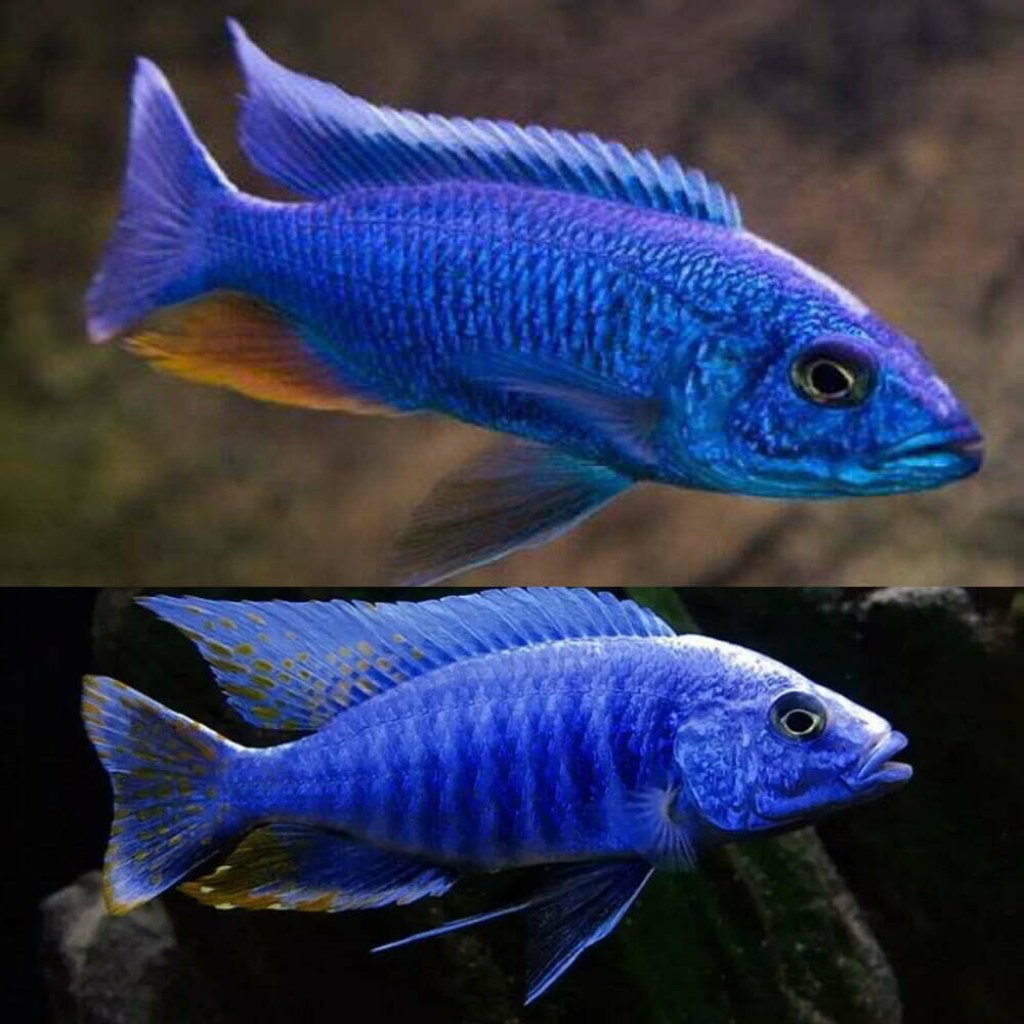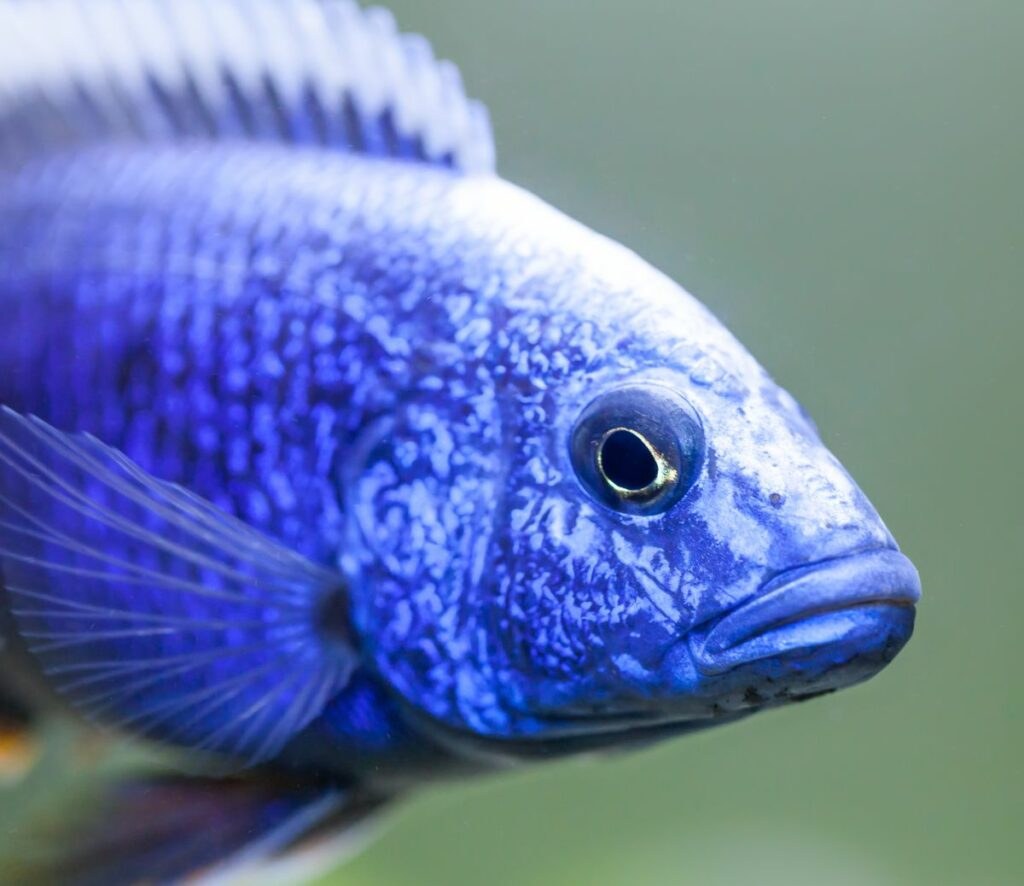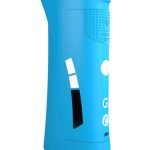Unleash The Vibrant Beauty Of African Electric Blue Cichlid: A Must-See Aquatic Wonder!
African Electric Blue Cichlid: Vibrant Beauty in Freshwater Aquariums
Introduction
Welcome, Smart Readers! In the world of freshwater aquariums, the African Electric Blue Cichlid stands out as a stunning and vibrant addition. With its striking blue color and unique features, this cichlid species has gained popularity among aquarium enthusiasts. In this article, we will explore everything you need to know about the African Electric Blue Cichlid, from its origin and characteristics to its care and maintenance. So, let’s dive into the world of this captivating fish!
3 Picture Gallery: Unleash The Vibrant Beauty Of African Electric Blue Cichlid: A Must-See Aquatic Wonder!
All About the African Electric Blue Cichlid
The African Electric Blue Cichlid, scientifically known as Sciaenochromis fryeri, is native to the waters of Lake Malawi in Africa. It belongs to the family Cichlidae, which consists of various colorful fish species. The electric blue coloration of this cichlid, especially in mature males, is its most striking feature, making it a sought-after species for aquarium enthusiasts.

Image Source: yourfishstore.com
These cichlids have an elongated body shape with vibrant blue scales and can grow up to 6 inches in length. Females usually have a less intense blue coloration compared to males. They are known for their aggressive behavior, territoriality, and unique courtship displays.
In their natural habitat, African Electric Blue Cichlids are omnivores, feeding on a variety of small organisms, including insects, crustaceans, and algae. To maintain their health and vibrant coloration, it is important to replicate their natural diet in captivity.

Image Source: aquariumfishonline.com.au
Let’s explore in detail various aspects of the African Electric Blue Cichlid to gain a better understanding of this fascinating fish.
What is the African Electric Blue Cichlid?
The African Electric Blue Cichlid is a freshwater fish species native to Lake Malawi in Africa. With its vibrant blue coloration and unique features, it is highly sought after by aquarium enthusiasts. This cichlid belongs to the family Cichlidae and is scientifically known as Sciaenochromis fryeri.

Image Source: buildyouraquarium.com
🐠 Fun Fact: The electric blue coloration in African Electric Blue Cichlids is more prominent in males, especially during breeding season.
Who Should Keep African Electric Blue Cichlids?
African Electric Blue Cichlids are a perfect choice for experienced aquarium keepers or those who are willing to invest time and effort in properly caring for these fish. Due to their aggressive nature, they may not be suitable for beginners or community tanks with passive fish species. However, if you are up for the challenge, the vibrancy and beauty they bring to your aquarium will be truly rewarding.
🐠 Tip: It is advisable to keep African Electric Blue Cichlids in species-specific tanks or with other cichlid species that can handle their aggressive behavior.
When and Where Can You Find African Electric Blue Cichlids?
African Electric Blue Cichlids are endemic to Lake Malawi in Eastern Africa. If you are interested in keeping them, it’s important to source them from reputable breeders or stores that specialize in African cichlids. These fish are available year-round, but it’s advisable to check for availability and proper acclimation procedures before bringing them home.
🐠 Fun Fact: Lake Malawi is home to over 1,000 species of cichlids, making it a paradise for fish enthusiasts.
Why Choose African Electric Blue Cichlids?
There are several reasons why African Electric Blue Cichlids are a popular choice among aquarium enthusiasts:
Their vibrant blue coloration adds a stunning visual appeal to any aquarium.
They exhibit unique courtship behaviors and breeding displays.
They are hardy and can adapt to various water conditions.
They have an interesting social hierarchy within their own species.
They provide an opportunity to observe natural behaviors and interactions in a controlled environment.
How to Care for African Electric Blue Cichlids?
Caring for African Electric Blue Cichlids requires attention to their specific needs. Here are some essential care tips:
Provide a spacious tank with ample hiding spots and territories.
Maintain water parameters suitable for African cichlids, including a temperature of 75-82°F and pH between 7.8-8.6.
Feed them a varied diet consisting of high-quality pellets, live or frozen foods, and occasional vegetable matter.
Monitor their aggression levels and intervene if necessary.
Perform regular water changes and ensure proper filtration to maintain water quality.
Observe their behavior closely and seek advice from experienced aquarists if any issues arise.
Advantages and Disadvantages of Keeping African Electric Blue Cichlids
Like any other fish species, African Electric Blue Cichlids come with their own set of advantages and disadvantages:
Advantages:
Their vibrant blue coloration adds a visual spectacle to any aquarium.
They exhibit fascinating courtship behaviors and breeding displays.
They have a high resilience and can adapt to various water conditions.
They provide an opportunity to observe natural behaviors and social interactions.
They can live for several years with proper care and maintenance.
Disadvantages:
They have aggressive tendencies and may not be suitable for community tanks.
They require a larger tank and specific water parameters to thrive.
They may exhibit territorial behavior and require careful monitoring.
They can be challenging to breed due to their specific requirements.
They may not be suitable for beginners or those looking for low-maintenance fish.
Frequently Asked Questions (FAQ)
Q: Can African Electric Blue Cichlids be kept with other fish species?
A: It is advisable to keep African Electric Blue Cichlids with other cichlid species or in species-specific tanks to avoid aggression and territorial conflicts.
Q: How large do African Electric Blue Cichlids grow?
A: African Electric Blue Cichlids can grow up to 6 inches in length, with males being slightly larger than females.
Q: What should I feed my African Electric Blue Cichlids?
A: African Electric Blue Cichlids are omnivores and require a varied diet consisting of high-quality pellets, live or frozen foods, and occasional vegetable matter.
Q: How long do African Electric Blue Cichlids live?
A: With proper care, African Electric Blue Cichlids can live for 6-8 years or even longer.
Q: Can African Electric Blue Cichlids change color?
A: African Electric Blue Cichlids may exhibit color changes based on their mood, breeding status, or social hierarchy within their group.
Conclusion
In conclusion, the African Electric Blue Cichlid is a captivating and vibrant fish species that can add a touch of beauty to any freshwater aquarium. While they require specific care and maintenance, the rewards of keeping these stunning fish are well worth the effort. Remember to provide them with a suitable environment, monitor their behavior closely, and offer a balanced diet to ensure their well-being. By following the guidelines outlined in this article, you can create a thriving ecosystem for your African Electric Blue Cichlids. Happy fishkeeping!
Final Remarks
Disclaimer: The information provided in this article is for educational purposes only. It is crucial to conduct further research and consult with experienced aquarists or professionals before keeping African Electric Blue Cichlids or any other fish species. The welfare of the fish should always be the top priority, and responsible fishkeeping practices should be followed at all times.
This post topic: Electric



